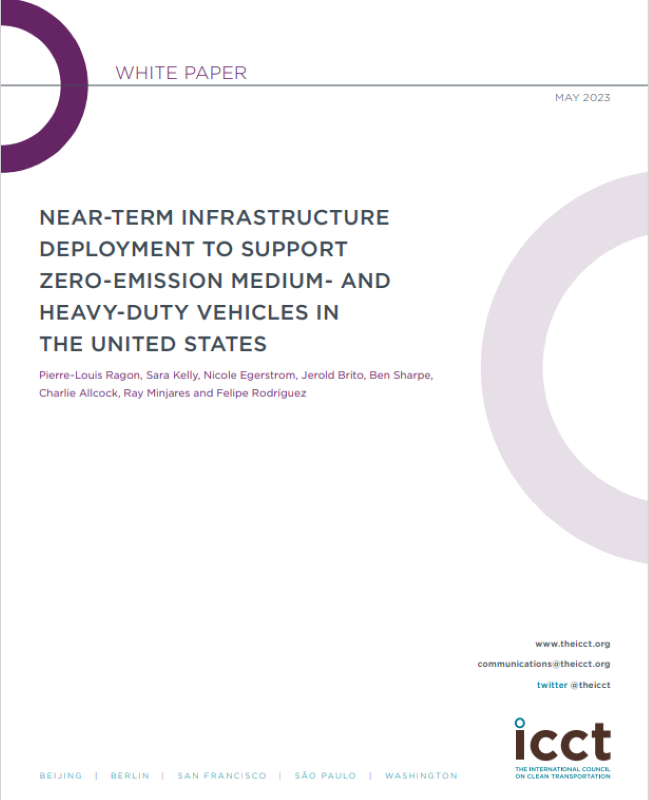This paper assesses the near-term charging and refueling infrastructure needs for Class 4-8 medium- and heavy-duty vehicles at the national and sub-national levels. Charger needs in 2025 and 2030 are projected based on zero-emission vehicle market growth, and priority locations for the deployment of charging and refueling infrastructure are identified in key areas.
The analysis finds that, In the near term, a few U.S. states are expected to experience the highest energy needs from medium- and heavy-duty vehicle charging. Those include states that have adopted California’s Advanced Clean Trucks rule, as well as states with the largest industrial activity. California and Texas alone are projected to account for a combined 19% of charging energy needs in 2030. Within those states, charging needs will be concentrated in a few industrial areas and along freight corridors. The energy needs of long-haul trucks will concentrate on the corridors of the National Highway Freight Network (NHFN). The NHFN is projected to comprise 85% of the charging needs from long-haul trucks by 2030.
By 2030, medium- and heavy-duty vehicle electrification is projected to increase the U.S. daily electric energy consumption by 140,000 megawatt-hours per day. This equates to around 1% of the total national electricity retail sales in 2021. High-energy demand counties are expected to experience high loads for medium- and heavy-duty vehicle charging of up to 130 MW. These power levels will require appropriate planning and early capacity building to accommodate for future transmission and distribution needs.
Preview the report here:
More About this Resource
Publisher: ICCT
Date: May 11, 2023
Type: Not Defined
Countries: None
States: None

